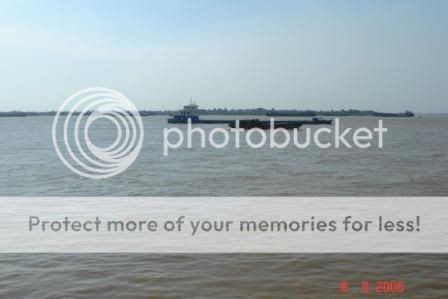
The Yangtze is China's main freight highway, and is navigable by commercial ships into the central Chinese cities of Wuhan and Chongqing. After the devastation of WWII and Communist Revolution, China had taken a conscious decision to distribute and decentralise its steel industry in the interests of national defence. Steel mills were set up along the Yangtze River, which in turn drove a river-borne trade of iron ore and coking coal.

When China began its economic 'growth spurt' in the 2000's, the River and the transport networks experienced uneven development. The lower reaches of the River are navigable some 274 miles to Nanjing in up to Panamax (70,000 DWT) bulk carriers. Navigation past this point is impossible due to a major rail bridge at Nanjing, and upriver trade continues with low air draft barges and river vessels.

The first river berths expanded to take Panamax and then Capesize were the steel mills in the lower Yangtze at Haili, Nantong, Boashan and Luojing. The River forms a natural bar at its entrance, which requires continuous dredging to maintain a navigable channel. With the growth in iron ore imports, the coastal deep water ports of Ningbo (Beilun), Majishan and Rizhao became storage hubs. Large ore carriers discharged their full cargo at the coastal ports, which was then transhipped on river vessels for delivery to mills on the Yangtze.

Once past the River entrance at Chang Jiang Kou, the River is deep - typically 17m to 21m of self scouring, fresh water channel. In 2006, new ore terminals were being built for Capesize (170,000 DWT) bulk carriers at Dagang Port (170 miles) and ore cranes being raised to handle Capesize airdraft at Jiangyin Port (130 miles). The only major impediments to navigation in the upper reaches is a high tension power cable spanning the River at Dagang and aquaculture in the more open northern river channel above Dagang Port.
At Nanjing there is a major iron and steel works on a branch channel to the north of the city. Here, small Chinese river/coasters operated on a continuous ore shuttle from the ocean ports.

Steam locomotives patiently hauled ladles of molten iron from the blast furnaces around to other parts of the mill for further processed.

After two weeks on the road and small provincial port towns , getting back to the big city buzz of Shanghai was strangely familiar and comfortable. The project proved in concept that bulk ore carriers could be part-discharged at the ocean ports and then proceed upriver to compete at the steel mills as far upriver as Zhangjiagang, Jiangyin and Dagang in Jiangsu Province.
The Antipodean Mariner

